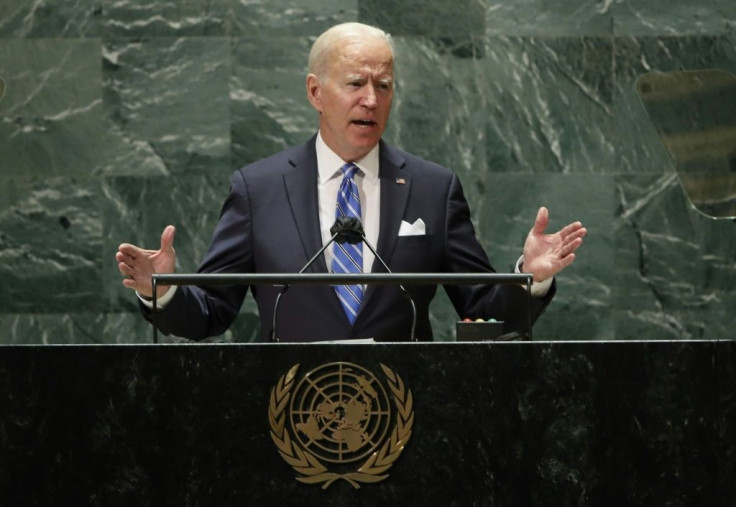US-Australia Submarine Deal: What Are The Risks?
The US decision to sell nuclear-powered submarines to Australia has put at risk longstanding but fragile global pacts to prevent the proliferation of dangerous nuclear technologies, according to experts.
The deal killed a previous French agreement to sell non-nuclear subs to Australia, and radically bolsters Canberra's ability to project military power across the Asia-Pacific region.
But will it encourage other countries to freely sell their nuclear technology, potentially expanding the number of countries who can build nuclear weapons?
Australia had originally sought conventional diesel-powered French submarines, which are more easily detected and must rise to the surface every few days to recharge their batteries.
Nuclear-powered submarines can spend weeks on end beneath the surface, traveling long distances undetected, only limited by stocks of food and water for the crew, generally a maximum of three months.
The submarines used by the US Navy, and also the British, who are part of the deal with Australia, use highly enriched uranium, or HEU, enriched to a level of 93 percent. At that level the submarines can run for 30 years without new fuel.

But that is also the same level of uranium concentration necessary for a powerful nuclear weapon.
One of the key worries about nuclear proliferation is that weapons-grade HEU cold fall into the hands of a rogue state or terror group, said Alan Kuperman, coordinator of the Nuclear Proliferation Prevention Project at University of Texas at Austin.
"The most likely path to such a bomb would be for an adversary to divert or steal one of the two required nuclear explosives, plutonium or highly enriched uranium, from a non-weapons purpose like reactor fuel," Kuperman wrote on the Breaking Defense news site.
US Navy ships "use about 100 nuclear bombs' worth of HEU each year, more than all of the world's other reactors combined," he said.
Only six countries -- the United States, Britain, France, China, India and Russia -- have nuclear-powered submarines. Countries have been cautious about allowing the spread of the technology and the fuel.
For James Acton, of the Carnegie Endowment for International Peace, the US sale to Australia is a disturbing precedent.
He noted that under the 1970 Nuclear Nonproliferation Treaty, countries that do not have nuclear weapons are not prohibited from acquiring nuclear-powered submarines and, if they wanted, could remove the nuclear material from the watercraft.

"This is a huge loophole," Acton wrote on Twitter.
"I'm not particularly concerned that Australia will acquire nuclear weapons. I am concerned that other states will use this precedent to exploit a serious potential loophole in the global nonproliferation regime," he said.
Daryl Kimball of the Arms Control Association said the US sale "compromises" Washington's own non-proliferation principles.
"It has a corrosive effect on the rules-based international order," he told AFP.
White House spokeswoman Jen Psaki insisted that the United States is still committed to non-proliferation, calling the sale to Australia "an exceptional case, not a precedent-setting case."
But experts call it risky.
The US-Australia deal "could well open a Pandora's Box of proliferation," said Tariq Rauf, the former head of verification at the International Atomic Energy Agency, which helps enforce nuclear agreements.
He said it could encourage non-nuclear weapons countries like Argentina, Brazil, Canada, Saudi Arabia or South Korea to buy nuclear submarines that could give them weapons-grade fuel.
Hans Kristensen of the Federation of American Scientists worries there could be a snowball effect of proliferation.
After the US-Australia deal, he told AFP, "Russia could potentially increase supply of such technology to India, China could potentially provide naval reactor technology to Pakistan or others, and Brazil might see an easier way forward on its troubled domestic submarine reactor project."
Experts say a somewhat safer alternative could be for Australia to obtain nuclear submarines that use low-enriched uranium (LEU).
LEU is enriched to a level of less than 20 percent uranium, a grade used in nuclear power plants. In submarines it has to be replaced every 10 years, in a dangerous and difficult process.
That has not deterred the use of the technology by navies in France and China. The US Navy has been pressured to shift to LEU, but has yet to do so.
© Copyright AFP 2024. All rights reserved.





















